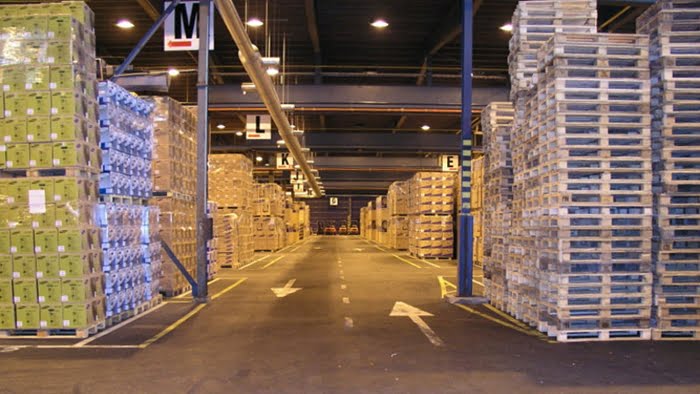Warehouse operations play a crucial role in the overall efficiency and productivity of businesses in various industries such as distribution, manufacturing, and food processing. It is essential for companies to optimize their warehouse processes to ensure smooth operations and cost-effectiveness. One key aspect of warehouse optimization is providing ergonomic solutions for warehouse workers.
What is Ergonomics?
Ergonomics is the study of designing and arranging the workplace environment to fit the physical abilities and limitations of workers. In the context of warehouses, ergonomics focuses on designing workstations, equipment, and processes in a way that reduces the risk of injury and musculoskeletal disorders while enhancing worker comfort and efficiency.
Implementing ergonomic solutions in warehouses not only improves the well-being of employees but also has a positive impact on overall operational efficiency and productivity. By addressing potential ergonomic issues, companies can significantly reduce the number of workplace injuries, absenteeism, and related costs. Let's explore some important ergonomic solutions that can benefit warehouse workers:
1. Proper Warehouse Layout
A well-designed warehouse layout is the foundation of an ergonomic workplace. It involves the strategic placement of equipment, storage areas, and workstations to minimize the need for excessive movements, bending, or reaching. The goal is to create a smooth flow of goods and reduce unnecessary strains on workers.
Consulting with experts like HCO Innovations can help businesses evaluate their existing warehouse layout and identify areas for improvement. Utilizing advanced cost-tracking software and a collaborative approach, HCO Innovations works closely with clients to optimize warehouse design and layout, maximizing efficiency and minimizing material handling costs.
2. Ergonomic Equipment
Investing in ergonomic equipment is vital for enhancing worker comfort and reducing the risk of injuries. For example, ergonomic forklifts with adjustable seats, easy-to-use controls, and good visibility can greatly improve operator comfort and reduce fatigue. Additionally, ergonomic lifting aids, such as lift-assist devices and adjustable-height workbenches, can help minimize strain and exertion on workers.
HCO Innovations specializes in forklift fleet management. They provide comprehensive services to ensure that companies have the right equipment for their specific needs. HCO Innovations can assist in evaluating the ergonomic features of forklifts and recommend appropriate solutions to enhance worker safety and efficiency.
3. Comprehensive Training Programs
Proper training is crucial to ensure that warehouse workers are aware of ergonomic principles and know how to apply them in their day-to-day tasks. Employees should receive training on correct lifting techniques, proper body mechanics, and the use of ergonomic equipment. Additionally, regular training sessions can help reinforce good ergonomic practices and create a culture of safety within the warehouse.
HCO Innovations understands the importance of training in warehouse optimization. They collaborate with clients to develop tailored training programs that focus on ergonomic best practices specific to their operations. By providing comprehensive training, HCO Innovations helps companies empower their workers to work safely and efficiently, ultimately reducing the risk of workplace injuries.
4. Regular Maintenance and Inspections
Regular maintenance and inspections of equipment and workstations are essential to identify and address potential ergonomic issues. Malfunctioning equipment, slippery floors, or poorly arranged workstations can pose significant risks to workers' health and safety. Conducting routine inspections and promptly addressing any concerns ensures that ergonomic standards are upheld and potential hazards are mitigated.
HCO Innovations offers turnkey maintenance solutions to help companies maintain their warehouse equipment and facilities. Their proactive approach includes regular inspections, preventive maintenance, and timely repairs. By partnering with HCO Innovations, businesses can ensure that their warehouse environment remains safe, efficient, and ergonomic.
5. Employee Feedback and Involvement
Warehouse workers are the ones who experience the daily challenges and demands of their workplace environments. Their feedback and involvement are invaluable in identifying potential ergonomic issues and finding solutions. Encouraging open communication and actively involving employees in the optimization process can lead to innovative ideas and practical improvements.
HCO Innovations promotes a collaborative approach to warehouse optimization. They work closely with clients and their employees, seeking their input and feedback to tailor solutions that address specific ergonomic challenges. By actively involving employees in the process, HCO Innovations ensures that the implemented solutions are practical, effective, and well-received by the workforce.
Improving ergonomics in warehouses not only benefits the well-being of workers, but it also has a significant impact on a company's bottom line. By optimizing the warehouse layout, investing in ergonomic equipment, providing comprehensive training, conducting regular maintenance, and involving employees, businesses can create a safer and more efficient work environment.
To learn more about warehouse optimization and the ergonomic solutions offered by HCO Innovations, visit their website.

